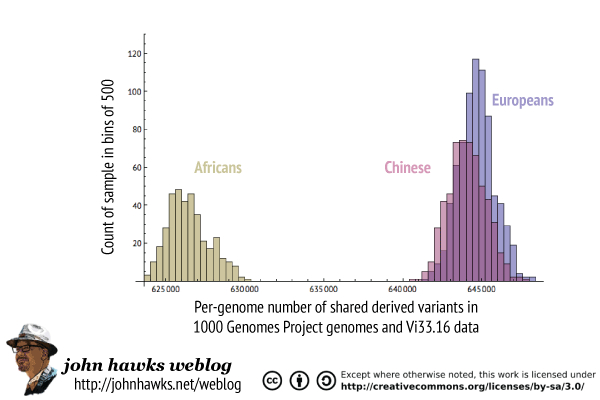Are American Indian Populations Subject to Sampling Bias in Human Origins Research?
The latest post by Dienekes re-kindled an observation that I wanted to make for a long time. Dienekes applied TreeMix software to ADMIXTURE components derived from HapMap-3 populations and created a tree with Sub-Saharan, East African, Northwest African, Gedrosia, Southwest Asian, Atlantic, Caucasus, North European, Siberian, South Asian, Southeast Asian and East Asian components. Of all major continental populations, the one that’s glaringly missing are American Indians.
The omission of American Indian samples from studies that purport to cover worldwide variation is not uncommon. John Hawks recently measured the degree of Neanderthal admixture in modern human populations. Again, his modern human sample included Africans, Chinese and Europeans. American Indians did not make the cut, although we know that it’s American Indians that a) show the highest frequencies of Neanderthal derived lineage B006, which is a basal lineage in the human X chromosome phylogeny; b) show the highest frequencies of blood group O for which Neanderthals also tested positive.
Finally, a little earlier, a new paper on OAS1 gene came out. Authored by Fernando Mendez, Joseph Watkins and Michael Hammer, it reported on the discovery of ancient genetic variation attributable to “archaic admixture” among the native of eastern Indonesia and Melanesia. The team sampled 6 Old World populations (San, Biaka, Mandenka, French Basque, Han Chinese, and Papua New Guineans) but no indigenous populations from the New World. I e-mailed Michael Hammer with a question on the status of the American Indian sample but never heard back.
These omissions tend to recur on a more or less systematic basis across both web-based and traditional research forums. They seem to reflect both the objective difficulty in securing American Indian genetic samples and scholars’ false sense of security that they know how and when the New World was peopled and that they can safely lose American Indians from their global samples without any loss of content related to human origins. One cannot exclude the third possibility, namely that some researchers choose to exclude American Indian samples because of the fear that they may upset conventional models of the “peopling of the Americas” and make those researchers look like crackpots in the eyes of their colleagues. Regardless of the reasons why American Indians are sometimes excluded from worldwide samples, these omissions perpetuate the bias against the question of the origin of American Indian populations as being somehow marginal to the “real” issues surrounding the formative periods in the evolution of human complexity. Even more importantly, it makes it hard to determine whether out-of-America has never been considered by mainstream science because of the systematic nature of the evidence against it or because of the systematic gaps in the data.



